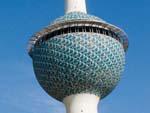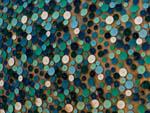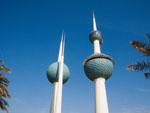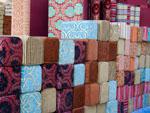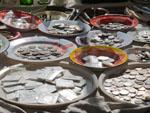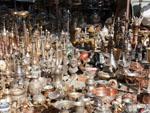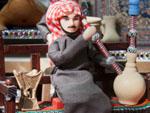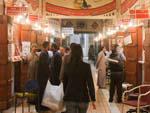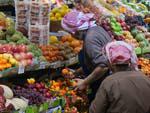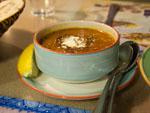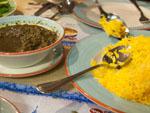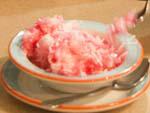Kuwait, not the first country that comes to mind when tourist destinations are mentioned, but given Sonya was there for a few weeks for work, with company paid hotels and flights, there was no reason not to check it out.
I arrived late on Thursday night (hours were wasted trying to get a VISA in the Kuwait airport) which gave us a full day on Friday and a half day on Saturday to explore Kuwait.
Kuwait Towers
The iconic Kuwait Towers stands 187 metre tall, the three spheres are decorated with sequins of multiple blue shades. We made our way up to the 123 metre viewing sphere which through the dirty glass, gave us panoramic views of Kuwait City
Friday Market (Souq al-Jum’a)
One of the more interesting open-air markets, with everything from Bedouin décor to Afghan coats. The shear scale of the market was unlike anything I had seen before, and the majority of the goods were second hand, it didn’t matter if the cooking pot was rusting or the computer ten years old, it was there on sale. We even purchased an ornamental traditional Arabic coffee pot (Dallah) for five Kuwaiti Dinars.
Souq al-Mubarakiya
Between around 11am to 4pm most places are closed, so we decided to visit Souq al-Mubarakiya, Kuwait’s Old Souq. The under-cover souq supported much fresh produce, including fruit, vegetables, fish and meat. There where the usual perfume, watches and gold stores as well as souvenirs. Outside the souq we decided to have lunch, for roughly ten dollars we had fresh Arabic bread, with grilled skewers of chicken and meat kofta.
Kuwait National Museum
One of the more official of the many Kuwait museums, Kuwait National Museum consisted of three separate buildings.
Al-Bader House
A collection of archaeological findings from Kuwait’s early history, pieces included early stone tools, ceramics and metal works. Many pieces are from Failaka Island, which was inhabited from 3000BC.
Heritage Museum
In interesting museum that presented a diy tour through Kuwaiti Heritage, it starts with a showcase of various traditional items including coins, clothing, weapons and hand tools. The ending finishes with a number of very impressive full sized dioramas with life-like statues portraying the early Kuwaiti way-of-life. Scenes included blacksmithing, basket weaving, praying and stores selling.
Planetarium
A museum unrelated to Kuwaiti culture but more on international space travel and our solar system, we didn’t spend much time there.
Naz Iranian Restaurant
One of the highlights (though it wasn’t even Kuwaiti), for dinner we ventured into Naz restaurant for some Persian cuisine. Our first taste of Iranian food, we ordered the Khoresh-e Ghormeh Sabzi (a stew of lamb, red kidney beans and copious amounts of parsley) , Kashk-e Bademjan (an eggplant spread) and tradition drink Doogh (a yogurt drink with mint). For desert we couldn’t resist the Persian rose flavoured ice-cream Faloodeh.
Kuwait House of National Memorial Museum
The following morning we visited the Kuwait House of National Memorial Museum, a museum detailing the Iraq invasion of Kuwait in 1990, all that led up to the war and details of the post war destruction and rebuilding. The start of the museum is an automated sound and light tour with many miniature sized dioramas depicting the war, it ends with photos, some quite gruesome, in one of the rooms is a head from a statue of Saddam Hussein captured in Iraq.
Tareq Rajab Museum
One of the few museums that survived untouched during the war, we unfortunately arrived too late and it was about to close for the midday prayer.
Red Fort (Al-Jahra Fort)
Thirty kilometres west of Kuwait, when we arrived at 1pm the gates were already closed.
thydzikgooglemap(http://sonyaandtravis.com/maps/kuwait-2011.xml)




































































































